FAQ
- Bolivia climbing questions
-
Mallorca island and rockclimbing
- What are main specifics of rockclimbing trip to Mallorca
- Mallorca island impressions
- Rockclimbing safety Spain
- Mallorca climbing accommodation
- What season is possible for rockclimbing in Mallorca
- Transport accessibility of climbing sectors in Mallorca
- Active vacation in Mallorca
- Saint Anthony night in Mallorca
- Peru climbing questions
- Gear reviews
-
Safety in the mountains
- How NOT to climb the summit?
- Mountain navigation
- At the limit of possibilities
- Mountain thunderstorm
- Solo ascents and mountain trips alone
- Mutual responsibility in mountaineering
- Safety illusions in the mountains - a rope
- Independent team of two
- Mountain troubles
- Psychological problems in the mountains
- Health in the mountains
-
Elbrus questions
- Elbrus climbing gear
- Climbing Elbrus with children?
- Mount Elbrus location?
- Elbrus logistics
- How to get to Mount Elbrus?
- Elbrus German airfield?
- Elbrus difficulty grade
- 5 points beginner must know about Elbrus
- How to prepare for Elbrus?
- Are there avalanches on Mount Elbrus?
- Climbing Elbrus solo?
- Seasonality of climbing Mount Elbrus
- How much time climbing Elbrus takes?
- Clothes for Mount Elbrus?
- Pressure at the top of Elbrus?
- Elbrus air temperature
- Elbrus sightseeing
- How much to climb Elbrus
- Gear questions
- Mountaineering questions
- Mountain climbing training
-
Rockclimbing questions
- Rockclimbing gear
- How to choose your first rockclimbing shoes
- The hand power in roclcimbing
- What is Rockclimbing tours
- Non olymnic rockclimbing
- What is rockclimbing?
- Where do you climb?
- Where and when we organize our rockclimbing programs?
- What is rockclimbing?
- Rockcliming program class?
- Climbing motivation
- Horse riding tours
- Iceclimbing questions
-
Questions on the alpine programs
- What to climb in Morocco?
- Weekend summit climb
- Georgia 2023
- Pico Aneto - what is that mountain?
- Mountain programs format
- Mountain climbing food ration
- Queries on the alpine program climbing Mount Bazarduzu
- Queries on the Kamchatka alpine program climbing
- What is combined program?
- What is sightseeing program?
- What is pilot program?
- What programs you have of the medium complexity level?
- Basic expedition rations
- Prices for the mountain climbing programs
- Queries on the Mountain Course in Adyl Su valley
- Program complexity?
- Questions about MCS AlexClimb
- Questions related to trekking programs
Safety illusions in the mountains - a rope
Read in Telegram
Leer en Telegram en Español
This article is about how safety stereotypes sometimes become not only useless, but also life-threatening.
Of course, mountaineering is a dangerous activity, here I am unlikely going beyond the banal axioms. However, there is an opinion about the relative safety of mountaineering, if certain rules are observed - I would prefer to deal with this subject in more detail.
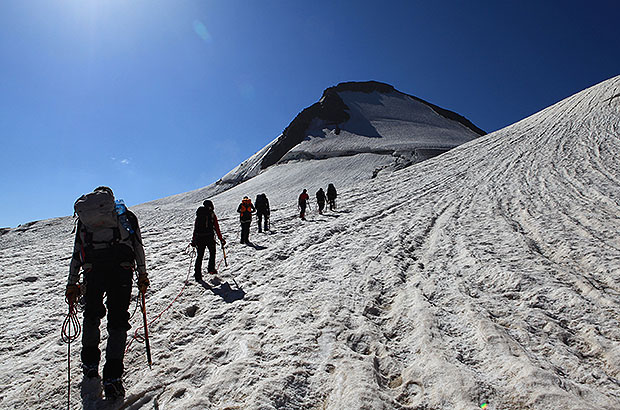
There are a lot of illusions and misconceptions, especially among couch specialists and TV mountain sports enthusiasts. I will deliberately not use the term "extreme sports" here, since, in my deep conviction, mountaineering refers to them only in its pathological forms. A normal person, guided by common sense and a sense of self-preservation, will never cross the line of "extreme" in mountaineering, as in anything else.
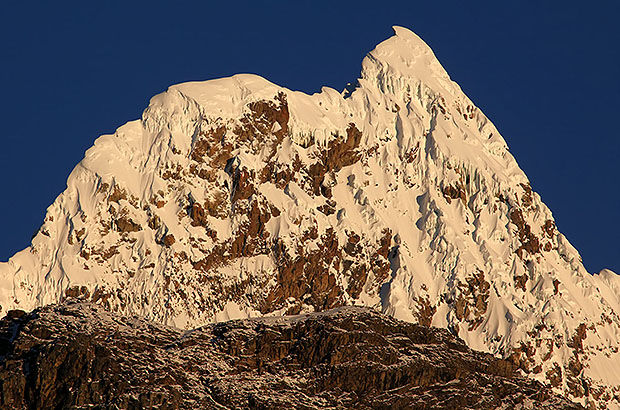
In this article, I want to dispel a common myth that using a rope on the route ensures the safety of climbers.
----------------------------------------
I am often asked why I do not always use a rope when climbing?

I will start answering the question from a little further and list the most reliable safety factors in mountaineering, and then I will go directly to the question asked about the rope.

So, the unconditional factors that increase the level of safety of people on the mountain trekking or climbing routes are:
All participants in the group have proven navigation skills and stable communication channels with rescue services, police and ambulances (cellular, satellite, radio channel).
Ideally, all members of the group should have access to these channels, and communication channels should be duplicated.
Availability of information for the rescue services about the route of the group, the timing of entry and exit from the route.

You probably get the idea - you should never rely on the possibility of self-rescue in the event of an accident. This is the most common misconception and the cause of many troubles in the mountains - overconfidence in one’s ability to solve problems.
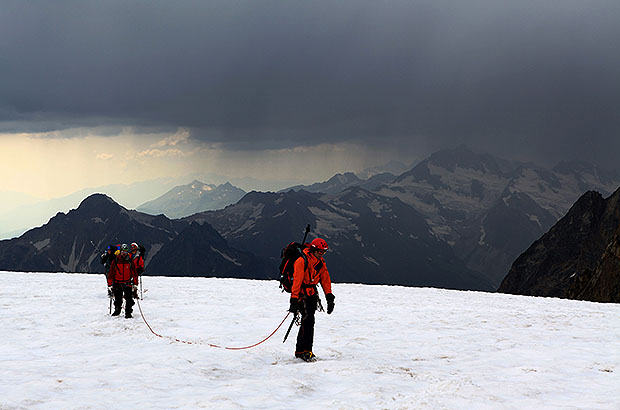
The presence of various devices for ensuring safety - a rope in case of a fall, a GPS navigator in case of loss of orientation, a first aid kit in case of illness - all this is necessary. But the effectiveness of all these elements is quite low, especially if the participants do not have special technical training in the use of these tools, which, as a rule, only a very few professionals have. So, outside help will always be 1000% more effective than any self-rescue measures.
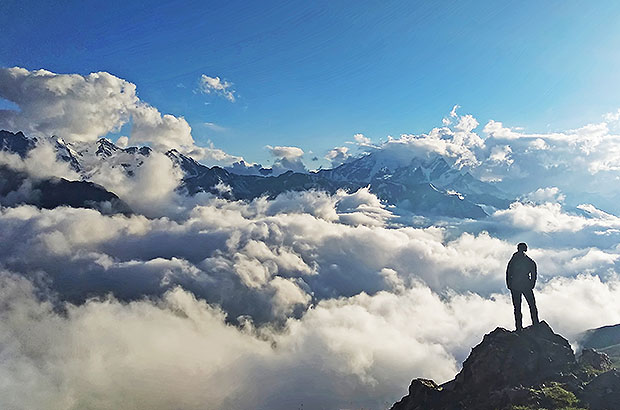
Now let's move on to the declared topic about the rope.
The following, in no way refers to difficult technical routes, and in no way is a call to climb without protection. The use of a rope is an indispensable element of protection when climbing, in case if there is a possibility of a fall - there is nothing to argue about and the classic position of safety in mountaineering is fully applicable here.

But, as soon as we move to routes of easy and medium difficulty, everything becomes not so obvious. Using a rope can become not only an ineffective measure, but even involve additional risks, the existence of which not many climbers are aware of.
Several examples and comments on them. Climbing Mount Elbrus, gentle icy slope. Moving up of the roped group without the organization of points of protection on the ice is an acceptable tactical decision, given the length of the route and weather conditions. However, in the event of fall of one participant, a fall of the entire group may occur, especially if the entire weight of the group is rather light - 2-3-4 people.

The result of using the rope is "one falls - everyone fell" Crashed, broken, no one left to call for help. All died. In this case, the rope helped only to the rescuers - all the bodies were connected with the rope and there was no need to search for them one by one.
Another example. The Ushba glacier, crevasse, a collapsed snow bridge and a pair of climbers in this crevasse with broken legs. They can’t get out, there is no radio connection, of course. They died from hypothermia. Most likely, they were not even found, since the rescuers will not be able to search all the crevasses on the glacier with all their desire. The rope did not save from fall, because in the rope of two, a common fall is the most likely result of a fall of one - even a small pull on the rope with an equal weight of the participants pulls down the second one and there is very little chance of holding on.
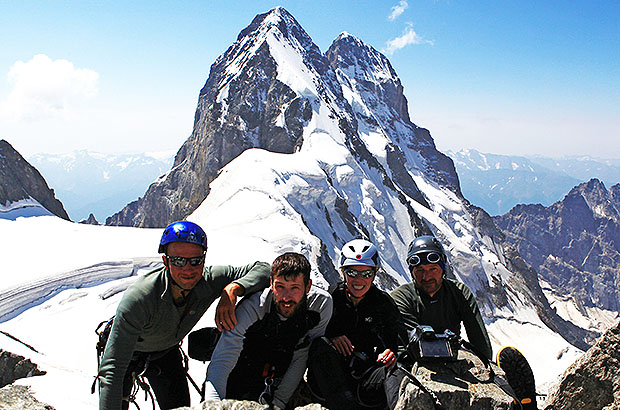
I would like to talk about the dangers of an independent climbing in a roped pair separately, this is an interesting topic.
The third example is the ascent of Mont Blanc, the roped climbing team moves along the scree rocky couloir of medium steepness - the progressing is slowed down due to the inefficient interaction of the participants. Result: when passing a section prone to rockfall, the group is hit with stones, the participants are injured, one died, rescuers arrived half an hour later and took everyone to the hospital – definitely it was not the best ending of the climb. And last example.

Mount Khan Tengri, a roped group traverses the slope prone to avalanche (closed glacier) – roped as it should be according to the rules. The broking down of a small wet avalanche right on the middle member of the team. The result is that the whole group is drawn down into the avalanche, the participants, entangled in the rope, cannot dig out and die at a shallow depth under the snow until help arrives. Without a rope, they could run away, and after the avalanche stops, quickly dig out those who nevertheless get into it.
Unfortunately, every year there are more and more examples of such accidents. Every year people die because no one has explained to them, told them, taught them to think about their own safety...
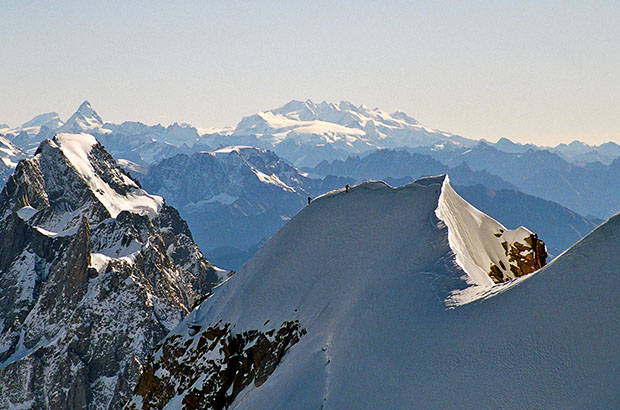
One conclusion must be drawn from the above. The use of the rope must be justified and tactically weighed, the decision is far from always obvious and for its correct adoption according to the situation, experience is required. Standard solutions (such as the mandatory use of a rope at all times), in some cases, do more harm than good. When teaching mountaineering, one should pay more attention to tactical decisions than to technical ones.

For example, spending a week for an alpine climbing course teaching a novice how to organize a chain hoist to pull a partner out of a crevasse is certainly interesting, but rather pointless at the same time, and possibly dangerous. Since, in case of the fall into crevass, this beginner will most likely be with his partner, confident that he has all the necessary knowledge on how to make a double chain hoist.
The author of the text and photos – Alex Trubachev
MCS 2023 EDIT
Our Principles
AlexClimb Rule #1 - Safety First
From the very beginning of our activity, here nearly 16 years, the first Principle of work of School of mountaineering and rock-climbing of MCS AlexClimb is the Safety Priority. On the basis of this Principle all process of training is based, all programs and rounds are developed and carried out only within this main principle. We consider that at professional approach to development of programs, at personal discipline and correctly put motivation - occupations by mountaineering and rock-climbing are COMPLETELY safe. And from the return - all troubles and accidents in our sport come from nonprofessionalism, from ignorance or neglect by elementary standards of safety, from irrational motivation, from revaluation of own forces and opportunities. All these prerequisites we COMPLETELY EXCLUDE in our work - ours Rock-climbing, Ice climbing and Mountaineering are based on one Principle - the Safety Priority. In rock-climbing, mountaineering and ice climbing, the Priority of Safety of MCS AlexClimb-is your personal security and comfort irrespective of, than we are engaged - we train muscles and we work technology of the movement in the sports hall and on the rock climbing wall, we make the way through snowstorm to top or we relax on golden sand of the Caribbean beach after hot day of trainings on rocks. The Safety priority - the main credo of School of mountaineering and rock-climbing of MCS AlexClimb.
AlexClimb Rule #2 - Leave No Trace
Closely interacting with Nature, working with the active programs in mountains, woods, lakes and rivers, we perfectly understand the importance of carefull and respectfull bahavior towards the Nature, for its resources. From the very beginning of our outdoor-activity we adopted rules of Leave No Trace technique - the standard of behavior of the person accepted in all the civilized world in relation to environment and especially - to the wild nature. After all on the relation of people to the nature near which they exist, itself can draw dalekoidushchy conclusions on the relation of these people to... Where and as we didn't travel - we don't reserve any garbage, we try to reduce whenever possible our influence on environment to a minimum. We clear earlier zagryazyonny tourist parking of the left garbage, we take out and we take out to utilization places that to us other people left there. We consider that only thus, at personal individual consciousness of each citizen, each tourist, climber or autotraveller, we will be able to keep the nature surrounding us in its state, natural, suitable for life, - in it pledge of the healthy future for ourselves and our children.





